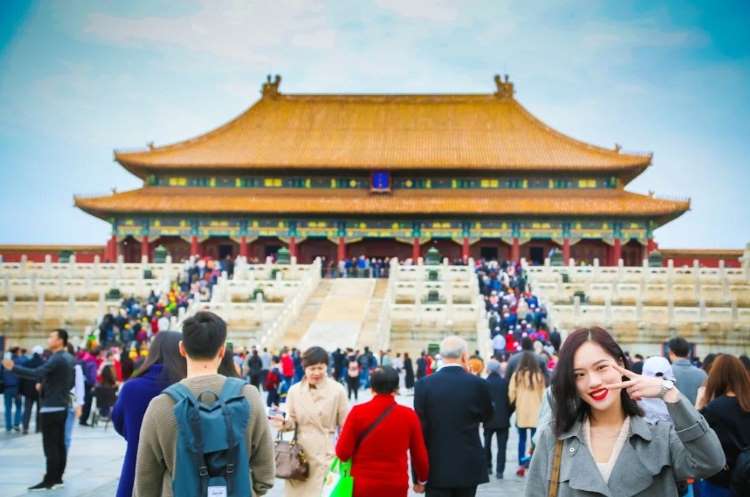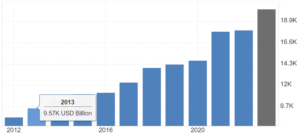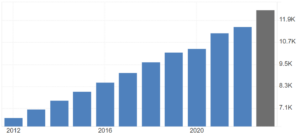
The Chinese economy has several distinctive features that characterise its current state and future trajectory. The economy is in a period of recovery, benefiting from what can be termed the sky effect, where a broad-based healing process is underway. This phase is marked by improving economic expectations. However, this recovery is set against the backdrop of a significant transition in China’s economic development model. Historically, external demand and the real estate sector were primary drivers of growth. Today, these factors no longer hold the sway as China pivots towards high-quality development and a more diversified growth model.
China has entered the post-industrialisation stage, progressing from the middle to the late stage of urbanisation. This shift necessitates a re-evaluation of development models and key economic drivers. The focus is now on creating sustainable urban growth, coordinated development of urban and rural regions, and enhancing the quality of life for its citizens..
The global economy is fraught with increasing uncertainties and complexities. Geopolitical tensions, adjustments in global industrial chains, and shifts in trade dynamics pose significant challenges. The interplay of these factors with domestic policies and economic strategies will shape the future of the Chinese economy. The global geopolitical risk index is at a relatively high level, reflecting the heightened external uncertainties that China must navigate.
READ I Can PLI scheme take flight across sectors?
Chinese economy: Performance and indicators
Despite the challenges, China’s economic recovery shows a positive trend. In the first quarter of this year, GDP growth reached 5.3%, surpassing the figure for the same period last year. Industrial performance has been robust, with significant expansion in sectors such as equipment manufacturing and high-tech industries. The creation of over 3 million new urban jobs in the first quarter of this year reveals the economy’s resilience.
China: Gross domestic product ($ billion)

China GDP per capita ($)

Domestic demand has become a more prominent driver of growth, particularly in areas like cultural and tourism consumption. During the recent May Day holiday, domestic travel surged, highlighting the strength of consumer confidence and spending. The role of domestic demand is further emphasised by the contribution of household final consumption expenditure which reached 73.7%.
Innovation and industrial strength
China’s innovation index ranks second globally, showcasing its strong momentum in research and development. China’s focus on emerging industries, particularly in high-tech manufacturing, is driving significant economic advancements. From January to April, the equipment manufacturing sector grew by 32.4%, accounting for 32% of the total industrial output. High-tech manufacturing also saw a value-added increase of 15%, with the production of new energy vehicles rising by 33.2% year-on-year. The rapid development of high-tech sectors signals a promising future for China’s industrial landscape, positioning the country as a leader in technological innovation and green development.
The country’s green industry and emerging sectors are growing at impressive rates, contributing to the overall economic resilience. The comprehensive industrial categories and strong supporting capabilities are significant advantages that bolster China’s economic foundation.
China’s industrial development is marked by significant diversification. The country boasts 666 industrial subcategories, encompassing nearly all industrial classifications recognised by the United Nations. This diversity provides China with a robust industrial base and strong supporting capabilities. Over the past 5 years, labour-intensive and resource-intensive industries have seen modest growth rates, while emerging sectors have experienced higher growth rates, averaging around 9.5% annually. This shift towards higher-value industries highlights China’s ability to adapt to changing global economic conditions and maintain competitive advantages.
China’s economic resilience is further supported by its well-developed infrastructure. High-speed rail networks and extensive highway systems provide a robust foundation for economic activities. The density of high-speed railways in China is notable, with 39.51 kilometres per 10,000 square kilometres as of 2020. Such infrastructure facilitates efficient movement of goods and people, enhancing economic productivity and integration across regions. Advanced infrastructure supports both social stability and economic development, contributing to long-term growth prospects.
Opportunities and challenges
China’s potential remains vast, with opportunities arising from continued urbanisation, a large and growing middle-income population, and a new generation of consumers with different lifestyles and preferences. The government’s focus on innovation-driven development and the digital economy is expected to create new growth points and drive further economic optimisation.
China’s potential for continued economic growth is significantly bolstered by its human capital and ongoing urbanisation. With a population of 1.4 billion and a per capita GDP exceeding $12,000, China has a substantial domestic market. The urban population, especially those born in the 1980s and 1990s, represents a new generation of consumers with distinct preferences and higher spending power. This demographic shift, coupled with urbanisation from middle to late stages, presents vast opportunities for economic expansion and modernisation.
Despite these strengths, the economy is facing several challenges. Ensuring smooth domestic circulation and balancing potential consumption with effective investment are critical. Additionally, the increasing external complexity and uncertainty demand careful navigation to sustain growth and stability.
The Chinese economy is at a critical juncture, characterised by significant recovery, ongoing transition, and substantial potential. However, it also faces considerable challenges that require strategic policy responses and adaptive strategies to maintain its growth momentum and resilience in an increasingly uncertain global environment.
(Dr Shi Yinghua is Director of Research Center on Macroeconomic Theory and Policy at Chinese Academy of Fiscal Sciences (CAFS). She is also a council member of the Society of Public Finance of China, and Vice Chairman of the Regional Finance Research Committee.)
